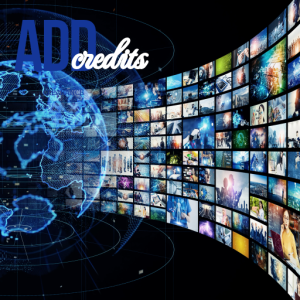Description
For professionals and advanced creators: Dive deeper with tokens to produce cinematic videos, branded content, and narrative-rich media.
At its core, this statement highlights a fundamental shift in AI media generation: moving from being a passive prompter to an active director. For casual users, a simple text prompt like “a robot walking in a futuristic city” is enough. For professionals, that’s just the starting point. They need control, consistency, and the ability to execute a precise vision. This is where a token-based system becomes a game-changer.
Think of tokens not just as words, but as atomic units of instruction. They are the specific commands, parameters, and identifiers that allow you to sculpt the output with precision, much like a filmmaker uses a script, a shot list, and a storyboard.
Here’s how this works in practice for different professional applications:
1. Producing Cinematic Videos
Cinematography isn’t just about what’s on screen; it’s about how it’s shown. Professionals can use tokens to mandate specific filmmaking techniques, orchestrating the AI as if it were a virtual camera crew and director of photography.
Shot Composition & Camera Movement: Instead of hoping the AI creates a dynamic shot, you command it.
Basic Prompt: An astronaut on Mars.
Advanced Tokenized Prompt: SCENE: Mars landscape. [shot_type: extreme_wide_shot] showing astronaut as a small figure. [camera_movement: slow_dolly_in] towards her. [lighting: golden_hour], creating long shadows. [lens: 35mm], slight lens flare.
Controlling Mood and Atmosphere: Tokens can define the intangible elements that create a cinematic feel.
Basic Prompt: A detective in a rainy city.
Advanced Tokenized Prompt: CHARACTER: Det. Miller. [mood: somber, contemplative]. SCENE: Neon-lit alleyway. [weather: heavy_rain, reflections_on_pavement]. [color_grade: film_noir, high_contrast, desaturated_blues]. [focus: rack_focus] from rain-streaked window to Miller's face.
Pacing and Editing: By generating a sequence of shots with specific durations and transitions in mind, a creator can essentially create an “edit-ready” sequence directly from the AI.
CLIP_1: [duration: 3s] [shot: close_up, hand_trembling].
CLIP_2: [duration: 5s] [shot: wide, character_runs_down_hallway].
2. Creating Branded Content
For brands, consistency is non-negotiable. The look, feel, and tone must align with the brand identity across all media. Tokens provide the necessary controls to enforce this brand compliance.
Maintaining Brand Aesthetics: You can create a “style token” or reference a pre-loaded brand guide.
Basic Prompt: A person happily using our new laptop.
Advanced Tokenized Prompt: [style_ref: Brand_Guide_X1] with [color_palette: primary_#0A1931, accent_#FFC947]. SUBJECT: Diverse female professional, 30s. [mood: optimistic, productive]. [product: Laptop_Model_Z, screen_on]. [setting: minimalist, bright office].
Consistent Characters and Mascots: If a brand uses a specific character or mascot, tokens can ensure they look the same in every single generated video.
[character_id: Mascot_Bobby_v2] ensures the AI renders the exact, pre-defined character model, not an approximation. This is crucial for avoiding the “generic AI” look and maintaining brand equity.
Tone of Voice: Beyond visuals, the narrative and actions can be controlled to match a brand’s tone.
For a luxury brand: [tone: elegant, sophisticated, serene]. [pacing: slow, deliberate].
For a youth brand: [tone: energetic, vibrant, fast-paced]. [editing_style: quick_cuts].
3. Developing Narrative-Rich Media
Storytelling requires coherence. Characters must be consistent, actions must follow a logical sequence, and emotional arcs must be believable. Tokens are the scaffolding for building these complex narratives.
Character Consistency (The Holy Grail): This is one of the biggest challenges in AI video. Tokenized character locking solves it.
You first define a character: DEFINE_CHARACTER: [id: Sarah_01] { face_model: ref_img_123.jpg, clothing: red_jacket, dark_jeans }.
Then, you can call that character across multiple scenes, ensuring she looks identical every time:
SCENE 1: [character: Sarah_01] stands at a bus stop, [expression: hopeful].
SCENE 5: [character: Sarah_01] is now on the train, [expression: worried], looking out the window.
SCENE 10: [character: Sarah_01] arrives at her destination, [expression: determined].
Building a Coherent World: Just like characters, locations and objects can be tokenized for consistency.
DEFINE_LOCATION: [id: Mystic_Forest] { aesthetic: glowing_mushrooms, ancient_trees, ethereal_fog }.
Later prompts can simply use [location: Mystic_Forest] to ensure the environment is perfectly recreated.
Structuring Plot and Action: A professional can write an entire script using tokens, giving the AI a scene-by-scene breakdown. This transforms the AI from a short-clip generator into a narrative partner.
SCENE_START: INT. COFFEE SHOP - DAY
[character: John_01] sits alone, [action: stirring_coffee]. [shot: medium_close_up].
[character: Maria_02] enters, [action: looks_around, spots_John]. [shot: wide_shot, from_door].
[sound_design: gentle_cafe_ambience, soft_jazz].
SCENE_END
Summary: From Prompter to Director
By diving deeper with tokens, professionals and advanced creators elevate their role. They are no longer just asking an AI to imagine something. They are providing a detailed blueprint and commanding the AI to execute it.
This level of control unlocks the ability to:
Guarantee Quality: Precisely match a storyboard or client brief.
Ensure Consistency: Maintain brand identity and narrative coherence.
Achieve Complexity: Weave together intricate stories with consistent characters and worlds.
Work Efficiently: Replicate styles, characters, and settings with simple token calls, radically speeding up production workflows.
In essence, a token-based system is the interface that turns a powerful but unpredictable AI into a reliable, professional-grade creative tool.





Reviews
There are no reviews yet.